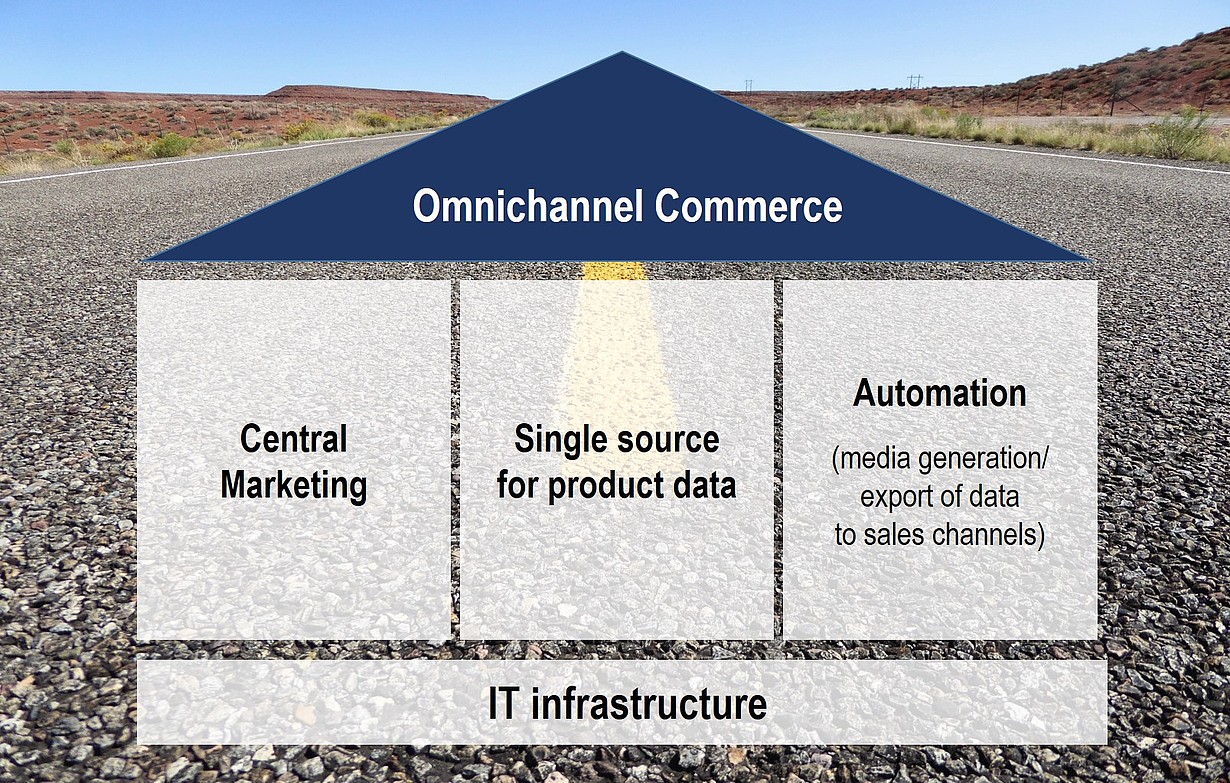Highway to PIM – #1: The Business Case
But what is a seamless shopping experience? What is it that makes a “positive customer experience”? Consumers expect, for example, the same look and feel as well as consistent product information across all channels. They don’t want to find out that the running shoes that they just tested in-store are cheaper in the same retailer’s online shop than in-store. They want the shop assistant to provide the same cleaning instructions for their new jacket as the online store and the catalogue. Or the shop assistant to order the appropriate accessories for their camera online and have them delivered to their home address.

By the way: This doesn’t necessarily mean that retailers should offer their products at the same price across all channels. In times of “dynamic pricing” this may not be the best idea. But if I just bought a pair of sneakers in a brick-and-mortar store I don’t want to find out that my retailer just sold the same pair of sneakers 20% cheaper on Amazon. A completely different approach is needed!
To return to the topic: How can you create a positive customer experience? Another important factor is personalization. As a customer, I don’t want to be bothered with irrelevant ads. I would like to receive offers that are tailored to my needs and interests and based on my purchase history (if I buy a tent today, I won’t need another one tomorrow, but maybe some other outdoor equipment).
But how can a company meet these complex omnichannel commerce expectations? A multitude of sales channels, a huge number of product, customer and profile data – the effort seems to be immense. As you will have guessed it, one of the key criteria of successful omnichannel marketing is a central master data system (Master Data Management). Product information management plays an essential role in omnichannel marketing – unless your company wants to rely on pure manpower. Specific software – so-called PIM systems – support the integration, generation, maintenance and provision of product data.
Omnichannel Marketing
The demands of omnichannel marketing can put existing structures to the test. Only if product data is maintained centrally and product-related content is linked, can omnichannel marketing be successful. The usual separation between departments, e.g. product management, print, online and direct sales will be replaced by a centralized marketing, media-independent content provided by a central source, and by automated provision of media. This has already had a significant impact on the organization of several companies.
To put it in business terms: central product information management allows you to achieve the right balance between costs and benefits for omnichannel marketing. Through an increase in sales volumes, cost reduction and improved customer loyalty.

Admittedly, restructuring your company and implementing a PIM system is not really a highway. Rather, it’s a long and winding road. This is the first in a small series of articles called “Introducing a PIM system”, aimed at helping you overcome some of the obstacles that you will face along the way. Let’s start with the first step:
#1 – Objective, business case, project planning
Why actually? Surely you already have some idea of why you absolutely need a PIM system in your company – at least since reading the introduction of this article. But these ideas are hardly sufficient to take such a far-reaching decision.
Thus, consider the following: What do you want to achieve with a PIM system? Would you like to reduce costs in order to be more competitive? Would you like to optimize processes in order to optimize your time to market? Would you like to reuse content in order to improve marketing efficiency? Or would you like to synchronize product master data because you have taken over a company and want to consolidate your product ranges?
Typical objectives are:
- Cost reduction
- Improved efficiency
- Reusability of content
- Development of new sales channels
- Cooperation between all parties concerned
- Improved quality of content
- Master data consolidation
Try to find out beforehand what your major pain points are and what goals you want to achieve. Because everything depends on it. If it’s even worth considering introducing a new software product. Which system is the most suitable. The budget. The integration into your specific processes and workflows.
You know exactly what you want to achieve with a PIM? Then let’s get to the next step: the business case. Quantify your goals. Find out if the introduction of a PIM system is economically viable. If not, it doesn’t make any sense.
Ask yourself questions like: How will my PIM help…
- increase my turnover and conversion rate?
- reduce the rate of returns?
- improve my time to market?
- avoid debt recovery costs?
- decrease costs of litigation?
- minimize corporate risk?
And most of all: Quantify your answers! How much can you reduce debt recovery costs through better data quality?
How much less is the risk of failure of the new software compared to the existing one?
A lot of work. But absolutely necessary in order to take an informed decision!
You have already compiled a business case that wants to be implemented?
Then look for our next article coming soon: #2 – Choosing a software vendor..
Keep up to date with our RSS feed.